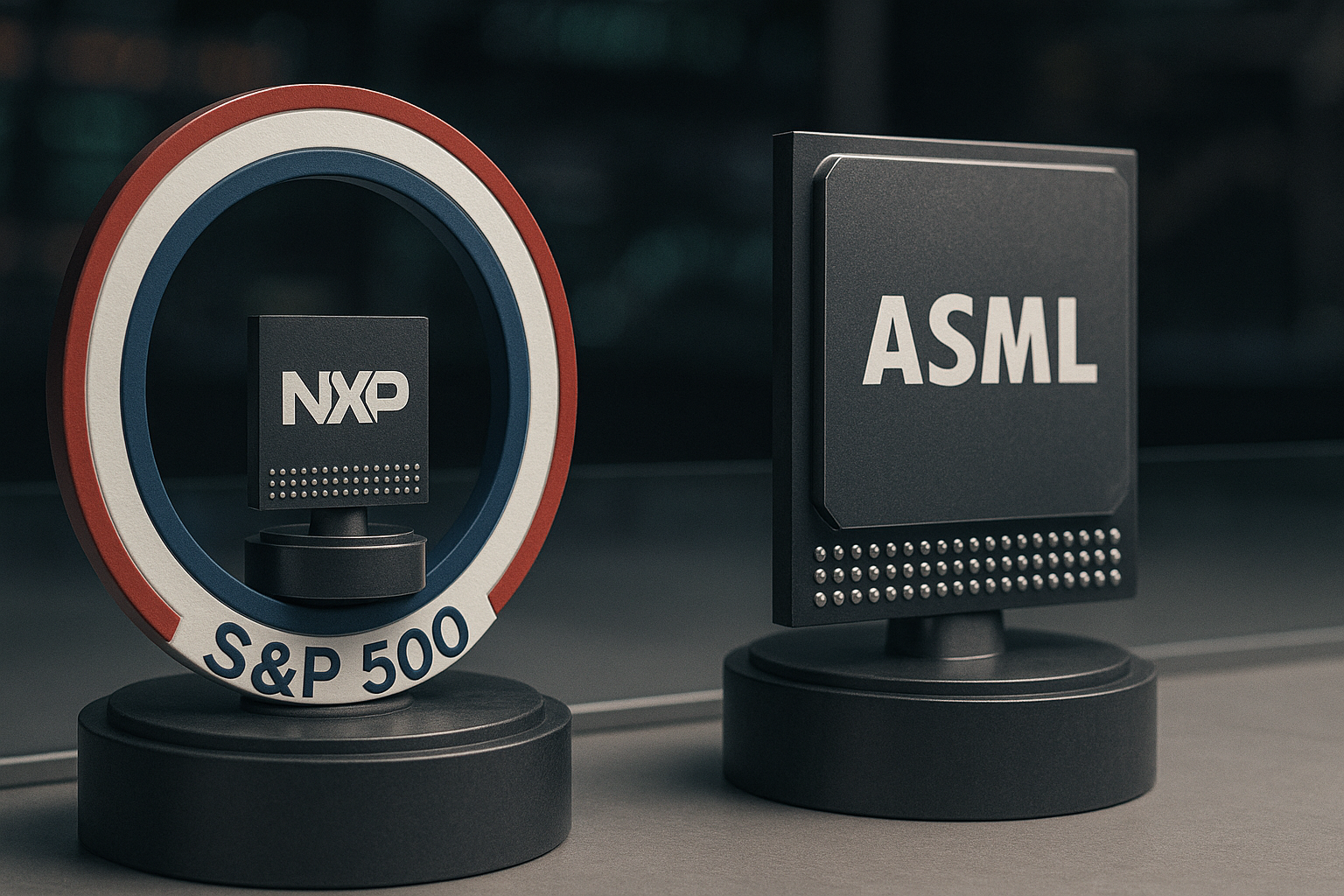There's something deliciously ironic about the way financial markets create their own peculiar hierarchies. I've been watching this play out for years in the semiconductor space, where corporate paperwork sometimes matters more than economic reality.
Take the curious case of the Netherlands' chip champions. NXP Semiconductors, a solid but relatively modest player in the semiconductor world, sits comfortably among America's blue-chip stocks in the S&P 500. Meanwhile, ASML Holding—the absolute colossus that literally makes the machines without which modern chips couldn't exist—remains conspicuously absent.
It doesn't make intuitive sense, does it?
I mean, just look at the numbers. ASML sports a massive $293 billion market cap, making NXP's $60 billion valuation look like pocket change in comparison. ASML essentially holds a monopoly on the advanced lithography equipment needed to manufacture cutting-edge chips. Without them, the digital revolution stops dead in its tracks.
So what gives?
The answer lies in what I'd call "corporate geography"—that murky space where legal domiciles and operational realities rarely align perfectly. Having tracked index inclusion rules for over a decade, I've seen this pattern repeatedly frustrate investors and companies alike.
Here's the thing: S&P Dow Jones Indices requires companies in their flagship index to be domiciled in the United States. Full stop. No exceptions, no matter how important you might be to America's technological future.
NXP, clever folks that they are, navigated this requirement through corporate restructuring. Though headquartered in Eindhoven and Dutch to its core, the company technically reorganized itself as U.S.-domiciled for index purposes. Think of it as obtaining a financial passport—same company, different paperwork.
ASML, by contrast, remains stubbornly, proudly Dutch. They haven't played the corporate shell game necessary to satisfy the S&P's American domicile requirement.
"It creates this absurd situation," a portfolio manager at a major asset management firm told me last month (requesting anonymity to speak freely about index providers). "We're forced to buy shares of smaller, less critical companies while ignoring the giants that actually enable the entire semiconductor ecosystem."
The consequences are far from theoretical. Index inclusion means automatic buying from the trillions—yes, with a T—invested in passive funds tracking the S&P 500. That's a permanent source of demand that NXP enjoys but ASML doesn't.
Look, I'm not suggesting there's anything nefarious about these rules. They exist for a reason—the S&P 500 is supposed to represent the U.S. economy. But in our hyper-globalized world, these distinctions feel increasingly arbitrary.
Countless S&P 500 members generate most of their revenue overseas, manufacture primarily in Asia, and employ more non-Americans than Americans. Yet they're "American" companies because of where they file certain paperwork? C'mon.
The situation reminds me of a conversation I had with an ASML executive at a trade show in 2019. When I asked about potential S&P inclusion, he laughed and said, "We're too Dutch for that. Besides, we're doing just fine without it." (Their stock performance since then suggests he wasn't wrong.)
But there's a broader point here about market inefficiencies and blind spots. If you're invested exclusively in S&P 500 index funds—as millions of Americans are—you own a slice of NXP but have zero exposure to ASML. That's like owning shares in paintbrush companies but nothing in the company that makes the canvas.
The irony gets even richer when you consider America's current obsession with semiconductor self-sufficiency. Politicians from both parties fall over themselves to subsidize chip manufacturing, yet the financial system structurally excludes the very company that makes advanced chipmaking possible.
This NXP-ASML paradox isn't just some technical curiosity—it's a perfect case study in how our financial plumbing sometimes works against our economic priorities.
For sophisticated investors, these arbitrary boundaries create opportunities. The structural demand that comes with index inclusion can be predicted and leveraged. I've seen hedge funds develop entire strategies around anticipated index rebalances.
Will this situation change? Probably not soon. Index providers move slowly, and for good reason—stability matters when trillions of dollars track your every move.
In the meantime, ASML will continue dominating its critical niche in the semiconductor industry, whether or not it's represented in America's premier stock index. And that, perhaps, is the ultimate lesson here: market importance and index inclusion often exist in separate universes.
Sometimes the most essential companies are the ones that don't make the official list.
